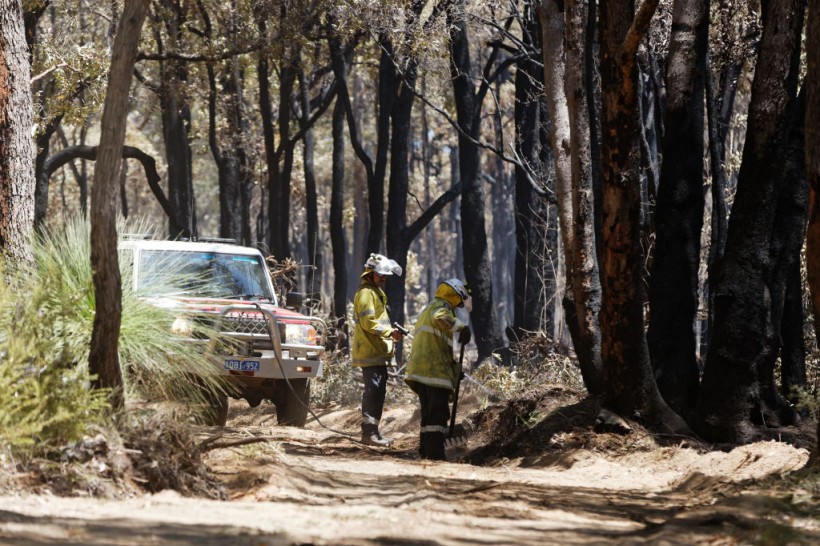According to the latest forecasts, parts of the East Coast in Australia could experience bushfire risks due to the dry and hotter conditions in the region.
Bushfires can spark massive fires in an instant that could result in devastating damage to communities, wildlife and ecosystems.
According a research published in Ecosphere, wildfires could likely emerge due to limited humidity, dry conditions, hotter weather or drought conditions.
The strong winds can also help fan the fire and spread massively.
Australians should also watch out for possible bushfires or fires, especially if their areas are vulnerable to fire conditions amidst the hotter temperatures.
Bushfire likely in parts of Australia

A stock photo of suburbs of Perth in Australia. The bushfire risks in Australia could be likely as warmer temperatures and dry conditions continue, according to reports. Bushfires can spark massive fires in an instant that could result in devastating damage to communities, wildlife and ecosystems.
In a recent report, Australia's weather bureau explained that the El Nino phenomenon would likely develop in September or November. When El Nino strengthens, it can potentially increase global temperatures and fire risks.
The latest forecast said that hotter temperatures with dry conditions could likely unfold, increasing the bushfire risks in parts of Australia.
The report added the growth of vegetation in Queensland and NWS could likely be at risk of fire, noting that El Nino would influence the weather event.
In this week's weather, the Bureau of Meteorology reported that sunny conditions could be possible in the following areas:
- Sydney
- Brisbane
- Darwin
How animals adapt to burned areas and high temperatures
Massive fires can harm wildlife and forests. Animals will likely suffer from wildfires and bushfires. However, the quokkas in Western Australia found ways to thrive and survive in burned areas.
Based on the study in the International Journal of Wildland Fire, quokkas developed exclusive zones to keep safe from wildfires. The zones are helpful to avoid exposure to fires.
The adaptive behavior of the quokkas can protect them from population decline and survive amidst rising temperatures. Wildfire is one of the threats against quokkas.
Quokkas prefer to live in shurblands and streamsides. The small animals can evade potential predators by leaving tracks.
As climate change worsens and El Nino begins, it is expected that extreme temperatures could be likely this year or next year.
As a result, the protection and mitigation plans are essential to prevent the possible impacts of massive fires.
Also Read: Quokkas in Western Australia: Animals Developed Adaptive Behavior to Survive in Burned Areas
How to avoid wildfires
Wildfires can be prevented, especially human-caused fires. Strictly observing fire safety in forests or communities would help avoid massive fires.
Here are essential reminders that people should remember to prevent bushfires or wildfires.
Avoiding flammable activities while in the forests or dry grass is important. Parking on dry grass could increase the risk of bushfires. It is best to turn off your engine or to keep away from the said areas.
It is helpful in the houses to regularly maintain your property and keep grass short. Watering plants is vital to resist possible burning.
Once you see bushfires near your home, it is crucial to extinguish them immediately. Installing garden hoses around your home would be helpful or come in handy when a fire breaks out.
Related Article: Purple-Crowned Fairy-Wrens Survival Endangered Due to Wildfires in Northern Australia
For more similar stories, don't forget to follow Nature World News.
© 2024 NatureWorldNews.com All rights reserved. Do not reproduce without permission.




![Roundworms with Short Memories 'Stop Forgetting' When Frozen or Given Lithium [Study]](https://1471793142.rsc.cdn77.org/data/thumbs/full/70295/280/157/50/40/roundworms-with-short-memories-stop-forgetting-when-frozen-or-given-lithium-study.jpg)
